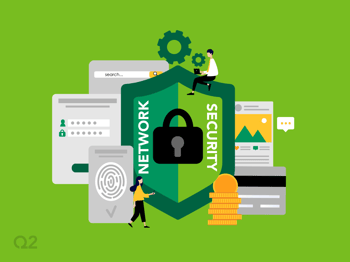By Chris Boas, Managing Director, Q2 Sydney Office
A change in approach and culture is often required for an FI to transition to greater use of automated lending or leasing. Managing Director of Q2 Lending in Australia Chris Boas often encounters questions about what this change entails and how it can be successfully achieved.
In this blog, Boas answers the most frequently asked questions he often hears about automation and organizational culture.
-
What is the most important cultural consideration my FI should focus on for achieving successful automation?
Fully automating processes typically involves many – if not all – parts of the business. It can feel like a daunting task, with the potential for a lot to go wrong. As you embark on this journey, highlight that it’s first and foremost a “change” journey, and the human element is the critical success factor. If the needs and fears of your workforce are not understood or addressed, it’s easy for the initiative to stop in its tracks.
I recommend identifying the mindset. Is it a legacy-tied culture trying to innovate or are people genuinely coming from a culture and desire to digitize? Even when companies operate with people who aren’t ready for change, there is no need to force the issue. Instead, it is important for leadership to focus on the higher-level mission that will ultimately drive the transformation forward.
-
How can my company remove the possible fear of obsolescence and lost jobs that may accompany the change?
There are fear mongers who suggest that automation will lead to fewer jobs—but if deployed correctly, the opposite is true. Give staff the information to know why it will provide positive benefits for all, including the opportunity to develop deep and lasting customer relationships, a more satisfying job and better skills for the future. In reality, no one wants to work for a tech laggard—if people understand and feel involved in the mission, they will be ready to embrace changes.
-
I expect resistance from my bank’s tech or development team. What are some of your recommendations to make them more open to automation?
Focus on the benefits they will gain, and there are many. They’ll spend less time dealing with siloed systems that don’t integrate well with each other, and as a consequence, their stress load will decrease. The time they gain also will increase their opportunities to create new products and focus on professional growth.
-
Does cultural change only apply internally?
I find that while some lenders believe their staff will embrace moving to automation, they worry that certain customer groups will not. Persuade them that the name of the game is offering options based on the customer’s preference. If they want person-to-person experience, then give that to them. For those who prefer digital, offer that too. What often happens is there is a convergence and people use different channels according to their requirement. If applied intelligently, automation can serve those customers who need that human interaction whilst maintain automation integrity. Chatbots and video conference will serve you well in these cases.





